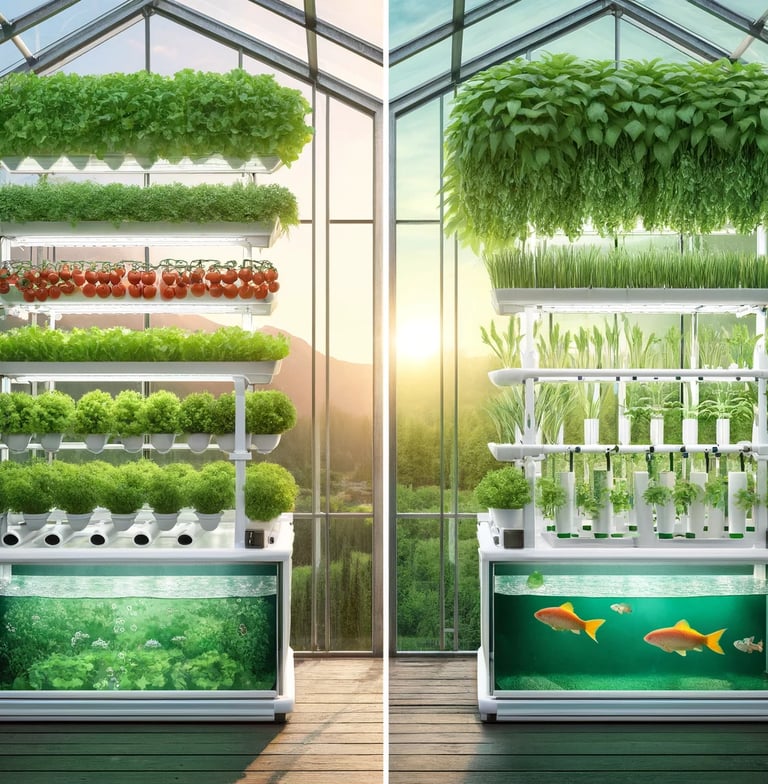Add your promotional text...
Starting Your Aquaponics System with Fishless Cycling
Explore the efficient method of fishless cycling for starting an aquaponics system. Learn how to safely establish beneficial bacteria with step-by-step instructions, optimizing conditions for quicker setup without harming fish. Perfect for beginners and experts alike seeking a robust start to their aquaponics farm
4/26/20242 min read


Fishless cycling is an efficient method to start your aquaponics system without risking the health of fish. This approach ensures that your system is biologically ready to process fish waste into valuable nutrients for plants, promoting a safe and healthy environment.
Understanding Fishless Cycling When setting up a new aquaponics system, establishing a bacterial colony is essential for converting harmful waste products into beneficial nutrients. Initially, your system will lack these crucial bacteria. In a traditional setup, fish are introduced early, and their waste produces ammonia, which is toxic. Beneficial bacteria such as Nitrosomonas then convert ammonia into nitrites (still harmful), followed by another bacteria, Nitrobacter, which transforms nitrites into nitrates. These nitrates serve as an excellent fertilizer for plants. However, this bacterial colonization takes time, and the interim accumulation of ammonia and nitrites can be lethal to fish.
Benefits of Fishless Cycling Fishless cycling eliminates the risk of harming fish during the early critical stages. By introducing ammonia manually, you can prepare the system without exposing fish to toxic conditions. This method not only ensures the safety of fish but also speeds up the process, allowing for a fully operational system in about half the time required for traditional cycling.
Steps for Fishless Cycling
Ammonia Introduction: Purchase pure ammonia, often available in aquarium cycling kits. Gradually add it to the water until ammonia levels reach 2 to 4 ppm (parts per million). For tanks under 100 gallons, start with half a teaspoon, testing and adjusting as needed. Be cautious with the strength of your ammonia source, as concentrations vary.
Monitoring and Adjustments: Daily, test the water for ammonia, nitrites, and pH. If ammonia drops below 2 ppm, add more to maintain the 2 to 4 ppm range. Continue this until nitrate levels reach at least 5 ppm, indicating that beneficial bacterial colonies are well-established.
Final Stages: Once you detect nitrates and both ammonia and nitrite levels fall below 0.5 ppm, the cycling process is complete, making it safe to introduce fish to the system.
Optimizing Conditions: During cycling, maintain water temperature between 77 to 86°F and pH levels around 7 to 8. These conditions favor bacterial growth, speeding up the cycling process.
Fishless Cycling Advantages Choosing fishless cycling over traditional methods with fish leads to a quicker setup, typically ready in just 10 days, as opposed to the four weeks it might take when cycling with fish. This method not only saves time but also enhances the safety and well-being of the fish.
Fishless cycling is a preferable method for starting an aquaponics system. It provides a safe environment for your fish and ensures that your system is efficient and ready to support both plant and aquatic life effectively. For more detailed guidance on setting up your aquaponics farm, consider consulting comprehensive resources like "Aquaponics 4 You" for step-by-step instructions.
